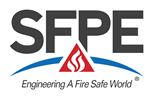FEMTC 2022
Structural Fire Assessment Of An Existing Tunnel 
Eric Tonicello - ISI - Ingénierie et Sécurité Incendie Sàrl
Abstract
Retrofitting and refurbishment of existing infrastructures is an everyday challenge for fire safety engineers, and maybe even more for structural engineers that must deal with constructions made following old codes and practices. In order to respond to these subjects (verification of structural strength, reduction or optimization of passive protection costs), engineering studies are increasingly using performance-based methods. This article describes a study on an existing road tunnel that will be upgraded with a new tramway line.
When analyzed with today's fire safety requirements, existing reinforced concrete structures, built between 1960 and 1980, may show insufficient structural fire resistance in case of an exceptional event, like a heavy loaded truck fire. The tunnel analyzed in this article consists of a 2-bays frame made of reinforced concrete, which slabs uses prestressing.
To assess the structural fire resistance, several fire scenarios were used, like ISO, RWS and finally CFD ones. Thermal action was then applied to the structure, and especially the prestressing cables. These analyses showed a lack of resistance that would need the use of expensive passive protective measures. An alternative fire concept has been then proposed to the client, with a new water mist plant.
Most of our retrofitting project concern office buildings, made of composite (steel-concrete) or ribbed concrete floors, with relatively limited fire load and risk, that allow these analyses and optimizations to be done.
Presentation
Resources
| Paper | Presentation | ||
|---|---|---|---|
| HTML | HTML | ||
| Resources Archive File (.zip) | |||

